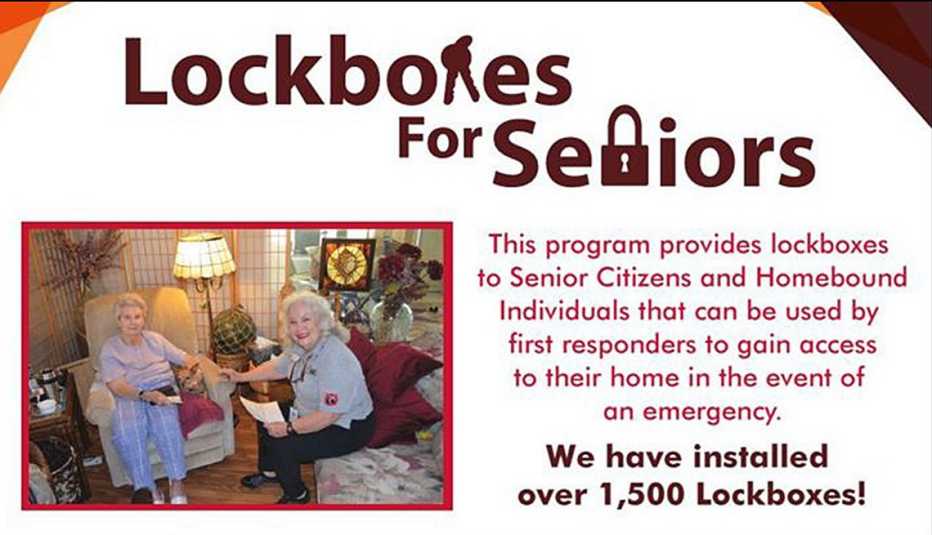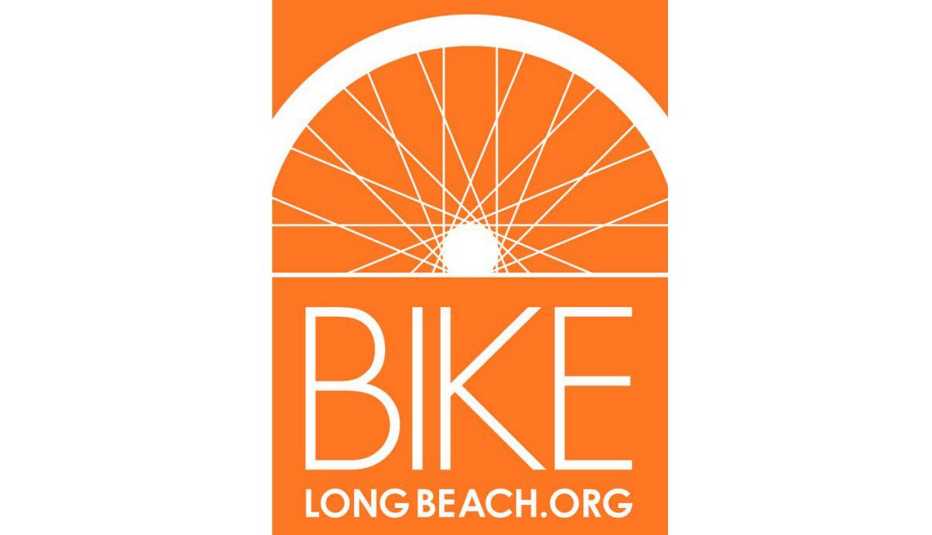AARP Hearing Center
Making a community more livable can involve an expansive infrastructure project, such as turning an abandoned rail line into an urban park. Or the solution can be small and very specific, such as ensuring that older people who live alone can get help in an emergency.
Other efforts are simply fun, like the "lawn chair" (pictured below) that was landscaped for a front yard arts festival.
Each example — presented here in no particular order — has relevancy to the 50-plus population and demonstrates how livability efforts improve communities for people of all ages.
In fact, several of the efforts hail from cities that, as members of the AARP Network of Age-Friendly Communities, are actively committed to becoming more livable for everyone, and especially for older adults by setting goals based on the so-called "8 Domains of Livability": Housing; Transportation; Social Participation; Respect and Social Inclusion; Outdoor Spaces; Communication and Information; Civic Participation and Employment; Community and Health Services.
New York High Line
New York, New York


The High Line is a 1.45-mile-long linear park located 30 feet above the ground and built on an abandoned railroad spur.
The park runs parallel to the Hudson River (yes, there are river views) from Gansevoort Street in Lower Manhattan north to West 34th Street along Ninth Avenue. The first phase of the park, a half-mile-long stretch, opened in 2009 and the final phase was unveiled in September 2014.
The High Line is a great place for people of all ages and abilities (six of its 11 entrances are accessible to stroller-pushers and wheelchair users). Visitors can enjoy programs and events, including public art, guided tours, food and drink vendors, performances and gardens.
In 2009 then-Mayor Michael Bloomberg declared that the High Line project was bringing Manhattan's Lower West Side back to life. By that year more than 30 projects were planned or under construction; in 2011The New York Times reported that the redevelopment had led to 8,000 construction jobs and about 12,000 jobs in the area.
Yard Art Day
Charlotte, North Carolina


Yard Art Day began in Charlotte, North Carolina, on Labor Day in 2012. That year the event had more than 250 participants.


Now an annual Labor Day event, Yard Art Day encourages Charlotte residents of all ages to create and participate in a community-wide art installation by displaying art on front lawns, balconies and even on the tops of cars. The only display rule: The art must be visible from the street.
Described by organizers as "a grassroots arts exhibition, curated by the community for the community," the 24-hour free event runs from midnight to midnight and defines art as all types of creative talent, including poetry, storytelling and dancing. According to Deborah Triplett, founder of Yard Art Day, the Charlotte event has inspired similar art days in South Carolina, Arizona, Illinois, Colorado, Florida, Massachusetts and Michigan.
"Souladarity" Streetlights
Highland Park, Michigan


As part of a deal to resolve $4 million of debt to the local utility and reduce a $65,000 per month electric bill, city officials in Highland Park, Michigan, agreed to remove more than 1,000 city streetlights, leaving the community's 10,000 residents in the dark.
In response to the debt-imposed blackout, a grassroots nonprofit, Soulardarity, began raising money to install solar-powered streetlights on Highland Park's dark streets. In 2012 the group raised enough money ($6,500) for a single streetlight, which it installed at 150 Victor Street, near the site of pioneering automaker Henry Ford's historic Highland Park factory.
The goal is to install 200 solar lights. As of spring 2015, two streetlights have been installed with a handful more slated for installation before year's end.
Lockboxes For Seniors
Scottsdale and Fair Hills, Arizona


The Lockboxes for Seniors program provides a lockbox for securing a spare house key outside the home of an older adult or person with special needs. The boxes are free to people whose annual income is less than $25,000. For all others, the boxes cost $25.
The resident is encouraged to share the locklbox combination with the local police and fire departments. That way, if he or she is inside the home but is unable to get to the door, the emergency responders can gain entry to the home without having to break in.
The program, which is sponsored by the Scottsdale Area Association of Realtors, Scottsdale police and fire departments and the Maricopa County Sheriff’s Office, was developed in 2004 as a response to concerns by older adults and their adult children.
Ped-Flag Program
Kirkland, Washington


The Seattle suburb of Kirkland has placed yellow flags at more than 75 crosswalks around the city. Pedestrians carry the flag from one side of the street to the other in order to be more visible to drivers.
The effort is buoyed by the "Adopt a PedFlag Crossing" program in which volunteers maintain and replace flags at their designated crosswalk.
The PedFlag program, which began in Kirkland in 1995, has spread to municipalities in more than a dozen states, including in Utah (Salt Lake City) and California (Berkeley).
Prescribe a Bike Program
Boston, Massachusetts


Established in March 2014 by Boston area doctors, the Prescribe a Bike program is administered by the Boston Medical Center in partnership with the city of Boston.
The program offers low-income residents who are struggling with obesity a free bicycle helmet and annual Hubway bike-sharing membership for just $5 a year. (The regular membership costs $80.)
In addition to its goal of enrolling 1,000 residents and improving health, the Prescribe a Bike program enables low-income residents to benefit from the city's Hubway bike share program and access affordable transportation.
Bike Saturdays and Bike Fest
Long Beach, California


Long Beach, California (population 469,000), wants to be "the most bicycle-friendly city in America."
To reach its goal, Long Beach has installed more than 120 miles of bike paths and created Bike Saturdays (during which hundreds of businesses offer discounts to cyclists) and BikeFest (a yearly art, food and music festival celebrating bicycling culture). Local businesses report an increase of customers at shops and restaurants and safer, more economically viable streets during Bike Saturdays.
According to Smart Growth America, between 2010 and 2012 downtown Long Beach, one of the city’s six bike-friendly business districts, experienced a 33 percent boost in people traveling by bicycle, a 13 percent increase of folks traveling by foot and a 23 percent decrease in vehicle crashes.
The Three-Wheeled Bicycle Program
Portland, Oregon


The three-wheeled bicycle program combines fitness with fun along Portland's Springwater Corridor Trail, where biking classes are held twice a week during the summer for people age 60 and older.
The city-hosted program, which debuted in 2012, provides three-wheeled recumbent trikes and bike helmets for the classes. Participants enjoy all that Springwater Corridor has to offer by riding past wetlands, buttes and pastures. (Watch a Streetfilms video about the program.) Each class is limited to five participants.
Citizens Connect
Boston, Massachusetts


In 2013, Boston was named the #1 Digital City in America — for a good reason. Launched in 2009, the Citizens Connect app allows residents to report neighborhood issues such as potholes, graffiti and damaged signs though the app — or a text, tweet or by visiting the website or calling.
All options are available 24 hours a day, seven days a week, 365 days a year. More than 10,000 neighborhood issues are fixed through Citizens Connect every year.
Other cities, including Austin, San Francisco, Washington, D.C., and Baltimore, have created their own version of the app.
Indianapolis Cultural Trail
Indianapolis, Indiana


An eight-mile urban bike and pedestrian path, the Indianapolis Cultural Trail runs through the city's downtown and connects neighborhoods, entertainment amenities, six officially designated cultural districts and the 40-mile-long Indianapolis Parks Greenway Trail system.
Funding for the $63 million project came from public and private financing.
Groundbreaking for the trail — which features eight unique routes, multiple public art installations and 25 bike share stations — took place in April 2007. The grand opening happened in May 2013.
Dancing Crosswalk Sign
Lisbon, Portugal


The "dancing crosswalk" makes pedestrians want to wait their turn to cross a street rather than dodge traffic. When such a crosswalk was installed in Lisbon, Portugal, in July 2013, pedestrians showed off their dance moves, which were shown in real time on the Walk/Don’t Walk signal.
Because of the dancing crosswalk, 81 percent more pedestrians stopped at the "Don't Walk" signal.
The fun traffic control equipment was installed for Smart Car's #WhatAreYouFor campaign, which was created for the launch of two new versions of its compact car. "We believe that smart ideas can turn the city into a better place," declared the car manufacturer. "Like a dancing traffic light that makes people watch and wait rather than walk through the red light." Smart Car hasn't said if the installation will be making an appearance in a different city or if it will ever be used in Libson again.
Katelyn Dwyer is a member of the AARP Livable Communities team. She holds a master's degree in public administration from American University.
Published May 2015




























































